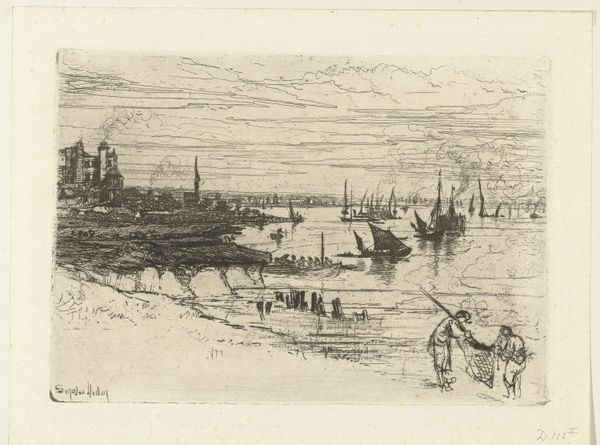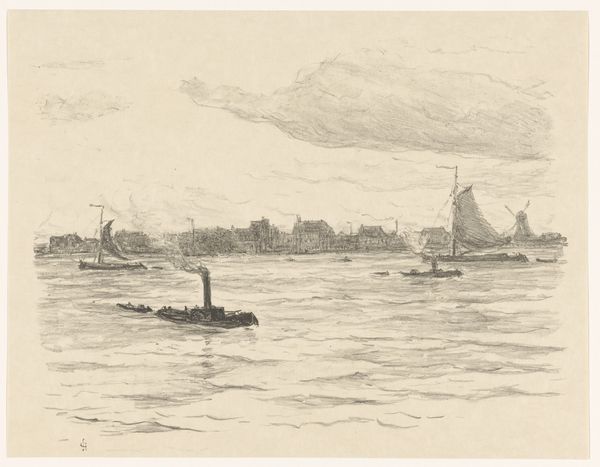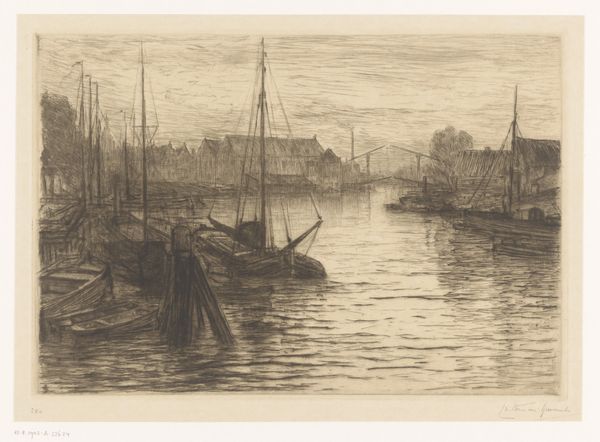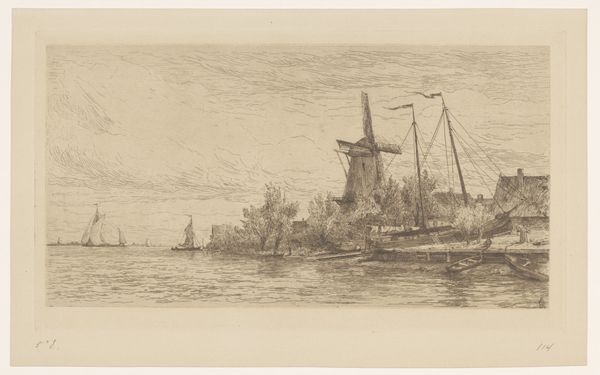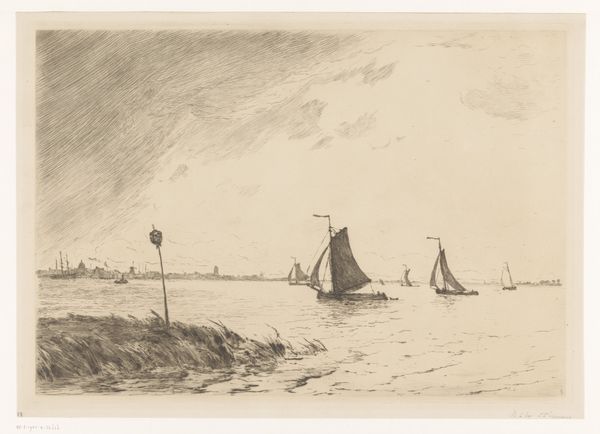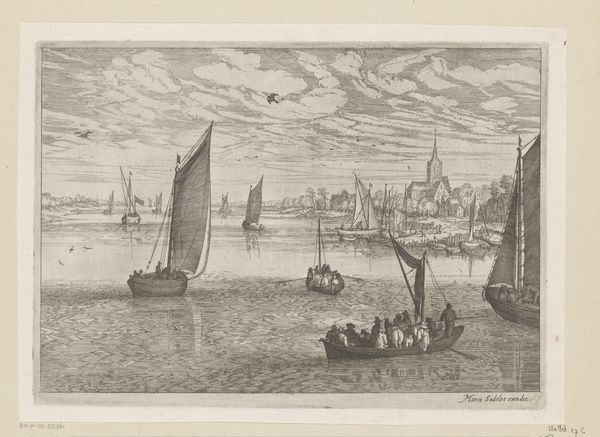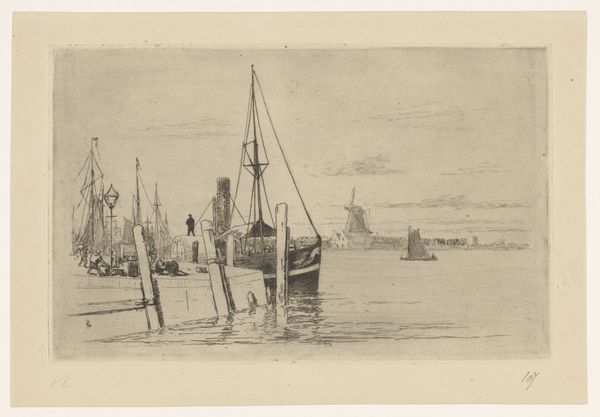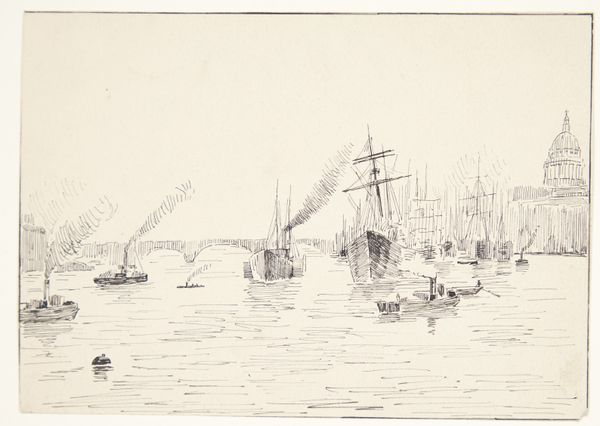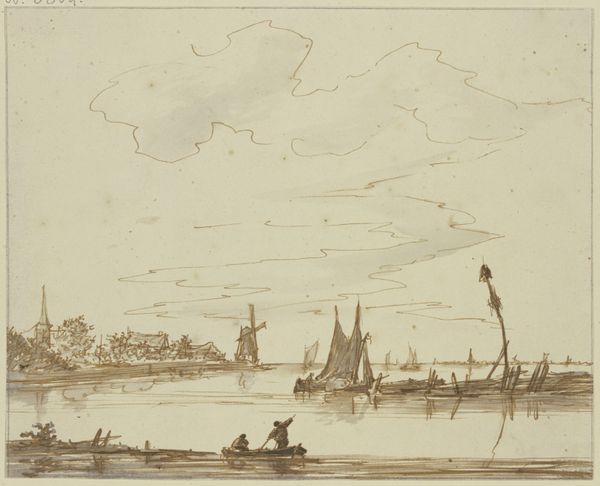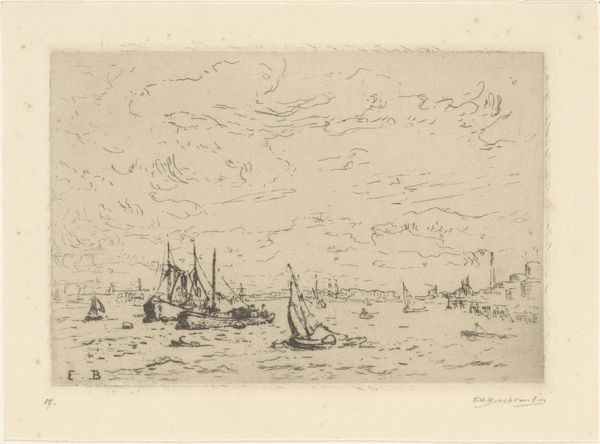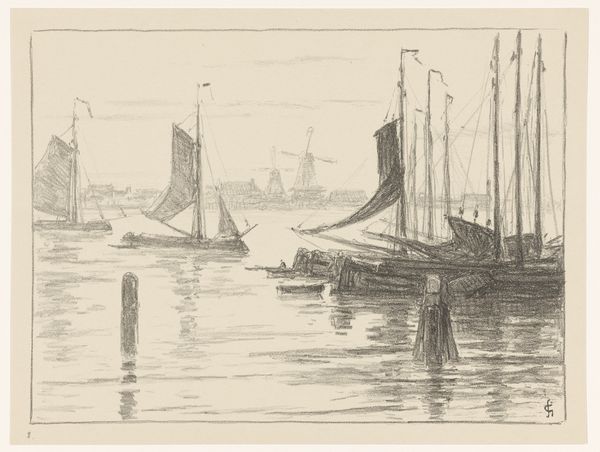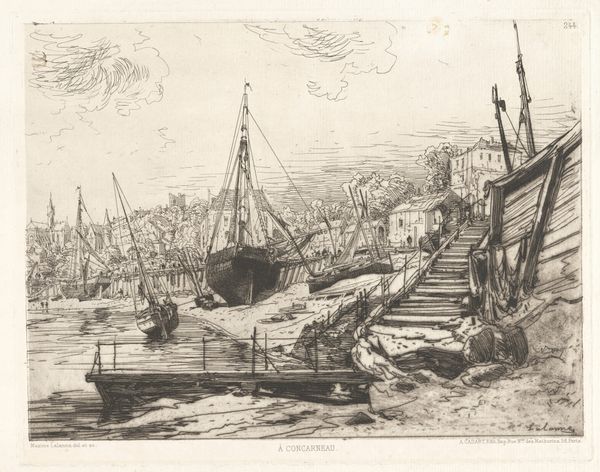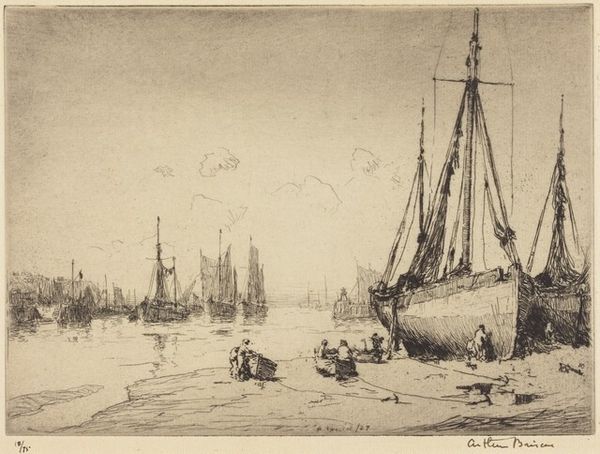
drawing, print, etching, ink
#
drawing
#
ink drawing
# print
#
etching
#
landscape
#
etching
#
ink
#
cityscape
#
realism
Dimensions: image: 17.4 × 28.3 cm (6 7/8 × 11 1/8 in.) plate: 22 × 31.7 cm (8 11/16 × 12 1/2 in.) sheet: 25.4 × 35.5 cm (10 × 14 in.)
Copyright: National Gallery of Art: CC0 1.0
Editor: This is "Port de Trouville," an etching by Maxime Lalanne from 1880. It's a bustling harbour scene rendered in intricate detail. What immediately strikes me is the stillness despite all the implied activity. What do you see in this work? Curator: The scene vibrates with a sense of place achieved through familiar visual cues: the masts, the clouds, the architecture. Each element operates as a cultural shorthand, instantly registering "harbour" or "maritime" in the viewer's mind. Notice how the artist uses line – hatching, cross-hatching – not just to describe form, but to suggest the atmospheric conditions? What does the specific character of that etched line, and the overall tonal range, evoke for you? Editor: A sort of faded grandeur, perhaps? Like an old photograph. Does that connect to why he chose etching, as opposed to, say, painting? Curator: Precisely! Etching lends itself to a nostalgic sensibility. Consider the period, too. 1880 was a time of massive industrial and social change. Maritime imagery served to symbolize both adventure and opportunity, but it also anchored the viewers to tradition and reassuring scenes from the past amid great social upheaval. This image then speaks not only of the harbor, but a broader human need to reconnect to the familiar, even if it’s presented as a constructed and curated idea. Editor: So, the etching technique itself contributes to the artwork's overall symbolism and message. It's interesting to consider how that visual language is constructed. Curator: Indeed. We look at "Port de Trouville," and we think of the sea, of course. But we also unconsciously decode and process the historical context embedded within the very lines of the image.
Comments
No comments
Be the first to comment and join the conversation on the ultimate creative platform.
